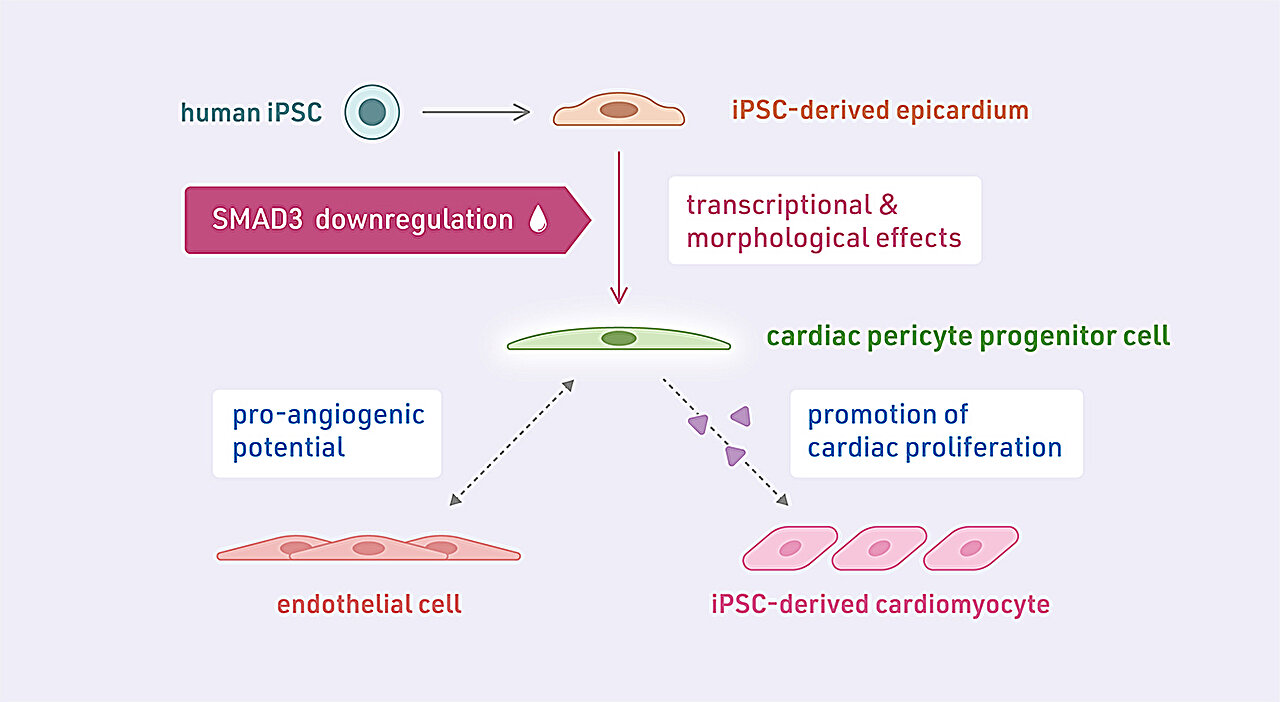
Efforts to foster both intrinsic and extrinsic regenerative responses in heart failure have once again brought iPS cell technologies to the forefront, thanks to their flexibility in reconstructing tissues in vitro and enabling researchers to investigate the biological mechanisms driving cell-fate decisions.
While the recovery of functional myocardium is critical in heart failure, the regeneration and physiological integration of other cell types are also essential to restoring full cardiac functionality. The human epicardium, a fascinating epithelial tissue, plays a pivotal role in heart homeostasis during development, contributing to various cell types that support cardiac function.
Unlike some species, the human epicardium loses its ability to differentiate shortly after birth. However, iPS cell technology has given researchers the ability not only to regenerate epicardium but also to modify its properties, allowing precise control over the variety of cell types produced based on a patient’s clinical needs.
A comprehensive screening of transcription factors involved in epicardial maturation led to the identification of SMAD3 as an important regulator of epicardial cells. While SMAD3 alone is insufficient to push for the full maturation of epicardial cells, it is essential for maintaining epicardial identity during the embryonic stage.
Its downregulation revealed unexpected functions, specifically as a modulator of the pericyte lineage, with roles independent of its well-known phospho-regulation, which typically drives differentiation under TGF-β stimulation.
“As a trained cardiologist, developing cellular tools that leverage our understanding of human epicardium biology to manipulate cell-fate decisions with precision provides clinical flexibility and hope for bridging the gap between basic research and clinical applications for cardiac repair,” said Yutaro Miyoshi, a graduate student in the Yoshida Laboratory who is the study’s first author.
To explore the ability to modulate epicardial plasticity, Miyoshi and his colleagues differentiated human iPS cells into epicardial cells and studied their responses to SMAD3 gene expression, evaluating their potential to differentiate into progenitors of cardiac pericytes.
“It is exciting to continue making molecular breakthroughs in the lab, exploring new possibilities to overcome heart failure and targeting the molecular keys for personalized medicine and regenerative treatments. This aligns with CiRA’s core mission and commitment to bringing this technology to patients.
“My laboratory is fully dedicated to this goal. The human epicardium continues to fascinate us, and we are only beginning to unlock its full potential,” said Yoshida, who led the study.
The use of these cells allows clinicians to scale the production of primed cells based on specific clinical needs, offering a tailored approach to cardiac repair.
Lucena-Cacace, a senior author of the study, stated, “While assessing the safety of these cells in preclinical models is crucial, the overarching message is more significant: We are beginning to create ‘catalogs’ of iPS-derived cells that will be highly useful in the near future.
“Our progress in understanding cellular behavior enables us to guide cells toward specific decisions to meet unmet medical needs. This is a remarkable intersection of developmental biology and applied stem cell research, made possible by iPS cells and the dedication of researchers worldwide.”
The discovery, published in Stem Cell Reports, reveals that these cells can associate with other cells in a proangiogenic manner to aid cardiac repair and stimulate dormant cardiomyocytes to re-enter the cell cycle, driven by the secretion of VEGFA protein from iPS-derived cardiac pericyte progenitor cells.
More information:
Yutaro Miyoshi et al, SMAD3 mediates the specification of human induced pluripotent stem cell-derived epicardium into progenitors for the cardiac pericyte lineage, Stem Cell Reports (2024). DOI: 10.1016/j.stemcr.2024.08.008
Citation:
Unlocking new regenerative pathways in iPS cell–derived epicardium for cardiac repair (2024, October 3)
retrieved 6 October 2024
from https://medicalxpress.com/news/2024-10-regenerative-pathways-ips-cellderived-epicardium.html
This document is subject to copyright. Apart from any fair dealing for the purpose of private study or research, no
part may be reproduced without the written permission. The content is provided for information purposes only.

